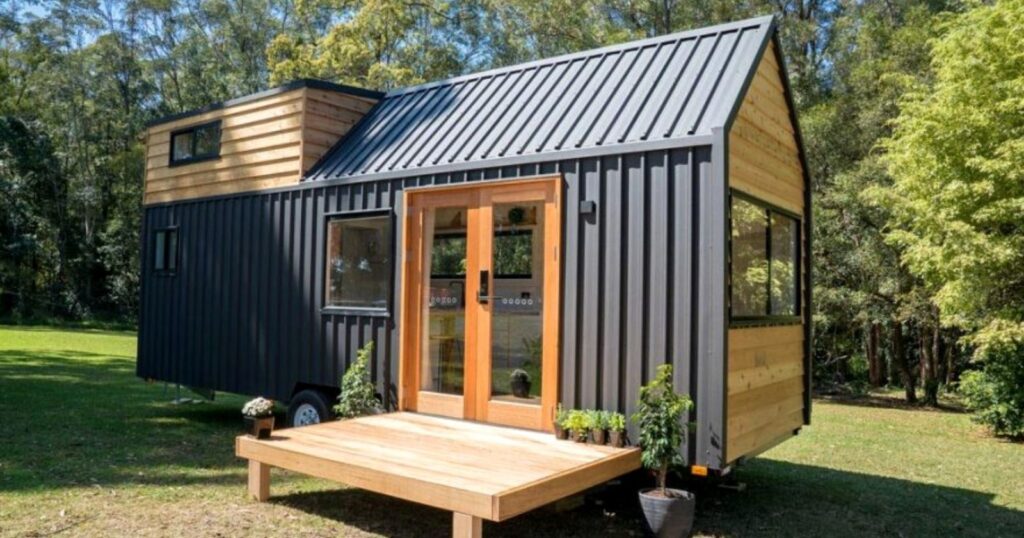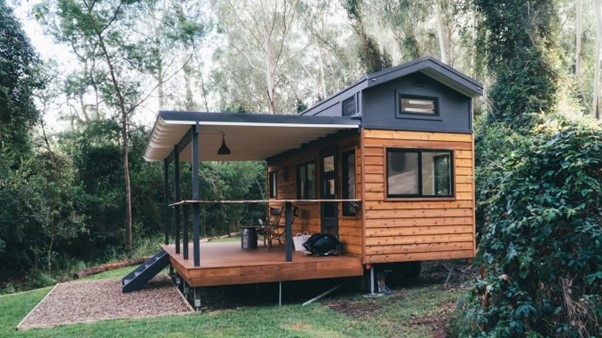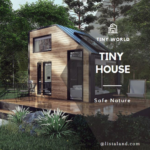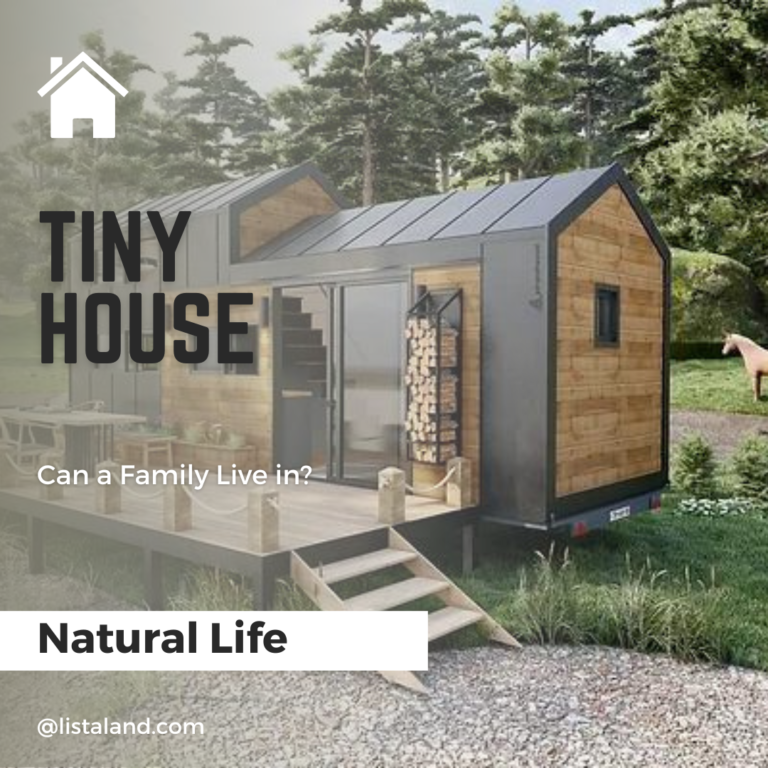A family can live in a tiny house, but it depends on the size and layout of the tiny house, as well as the lifestyle and needs of the family. Tiny houses are typically less than 400 square feet, which can be a tight squeeze for a family of more than two people. However, with careful design and planning, it is possible to create a functional and comfortable living space for a family in a tiny house.
One way to make a tiny house more livable for a family is to incorporate multi-purpose spaces. For example, a dining table that can also be used as a workspace, or a couch that converts into a bed. Another way is to create a separate sleeping area for the parents and the children. This can be accomplished by installing a loft bed or bunk beds, or by creating a separate room with a door.
Another consideration is the storage space, a family will need more storage space than a single person or a couple, so it’s important to include ample storage in the tiny house design. This can be achieved through built-in storage solutions, such as cabinets and shelves, or by using space-saving furniture that also has storage.
It’s also important to keep in mind that living in a tiny house may require a change in lifestyle. Families living in tiny houses may need to be more mindful of their possessions and keep clutter to a minimum. They may also need to be more creative with how they use their space and be open to a more minimalist lifestyle.

Overall, a family can live in a tiny house, but it may require some adjustments and compromises. It’s important to consider the needs and lifestyle of the family, as well as the size and layout of the tiny house, before making a decision. And, as always, it’s important to research and understand the regulations in your area regarding tiny houses as zoning laws and building codes can also affect the feasibility of owning a tiny house.
How big is a tiny house?
A tiny house is typically defined as a dwelling that is between 100 and 400 square feet in size, but it can vary depending on the source. According to the International Residential Code (IRC), a tiny house is defined as a dwelling that is less than 400 sq. ft. in total floor area, excluding lofts and sleeping areas that are accessed by ladders. According to the Tiny House Society, a tiny house is a dwelling that is 400 sq. ft. or less. The Tiny House Movement, a social movement that advocates for living in smaller, more sustainable homes, typically defines a tiny house as being between 100 and 400 sq. ft.
It’s important to note that the actual size of a tiny house can vary depending on the design, the owner’s preferences and the local building codes. Some tiny houses are built on wheels, allowing them to be easily transported, and are subject to different regulations than a traditional home. Others are built on foundations and are subject to the same regulations as a traditional home.
Why are tiny houses so popular?
Tiny houses have become increasingly popular in recent years for several reasons:

- Affordability: Tiny houses are generally less expensive than traditional homes, which makes them more accessible for many people, especially for first-time homebuyers or for those looking to downsize.
- Sustainability: Tiny houses are often designed to be energy-efficient and use sustainable materials, which aligns with the growing trend of living a more sustainable lifestyle.
- Flexibility: Tiny houses are often built on wheels, which allows them to be easily transported and can offer more flexibility in terms of where they can be located.
- Simplicity: Tiny houses have a minimalist design, which can appeal to those looking to simplify their lives and reduce clutter.
- Community: The tiny house movement has a strong community aspect, with many tiny house enthusiasts coming together to share resources, knowledge, and support.
- Personalization: Tiny houses can be personalized to fit the owner’s specific needs and preferences, which can be more difficult with a traditional home.
- Financial freedom: Tiny houses can offer financial freedom, as they are less expensive than traditional homes, and can allow people to own a home without having to take on a large mortgage.
- Adventure: Tiny houses can offer an adventure, as they can be moved to different locations, allowing people to live in different places without having to buy or rent a new home.
The tiny house movement has grown in popularity as a way for people to live simply, sustainably, and affordably. It also allows people to have more freedom, flexibility and control over their living spaces.
How do tiny houses have electricity?
Tiny houses can have electricity in several ways:
- Shore power: Many tiny houses are built on wheels, which allows them to be easily transported and parked in various locations. Some tiny house owners will park their home in a location that has access to shore power, which is a connection to the electrical grid that allows the tiny house to draw power from the grid. This is the most common way tiny houses have electricity.
- Solar power: Some tiny houses are equipped with solar panels, which can convert the energy from the sun into electricity. This is a more sustainable and eco-friendly option, but it can be more expensive to install and may not provide enough power to run all the appliances and systems in the tiny house.
- Generator: Some tiny houses have a generator that runs on gasoline, propane, or diesel, which can provide electricity when shore power is not available. This is a good option for those who travel frequently or are off grid, but it can be more expensive and require more maintenance than using shore power.
- Battery-based systems: Some tiny houses are equipped with battery-based systems, which store energy generated by solar panels or wind turbines and allow the homeowner to use the stored energy when it’s needed. This is a more sustainable and eco-friendly option, but it can be more expensive to install and may not provide enough power to run all the appliances and systems in the tiny house.
- Combination: Some tiny houses will have a combination of these systems, such as solar panels, generator, and battery-based systems, which can provide more options, and a more reliable power source.
It’s important to note that the tiny house’s electrical system needs to comply with local and national regulations, also the homeowner should consult with an electrician and/or a tiny house builder to ensure that the electrical system is properly installed and safe to use.
Do tiny homes have toilets?

Yes, tiny houses can have toilets. The most common type of toilet in a tiny house is a composting toilet, which uses a combination of heat, air, and microorganisms to break down waste, and turn it into compost. Composting toilets are a popular choice for tiny houses because they don’t require a connection to a septic or sewer system.
Another option for tiny houses is an incinerating toilet, which uses heat to burn waste, reducing it to ashes. This type of toilet is also a popular choice for tiny houses because it doesn’t require a connection to a septic or sewer system.
A third option is a standard flush toilet that is connected to a septic system, this is the most common type in traditional homes, but it requires more space and resources than the other two options.
It’s important to note that the type of toilet you choose will depend on local regulations, personal preference, and the overall design of the tiny house. it’s always recommended to consult with a professional to ensure that the toilet is properly installed and compliant with the regulations.




0 Comments